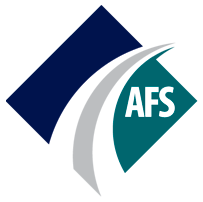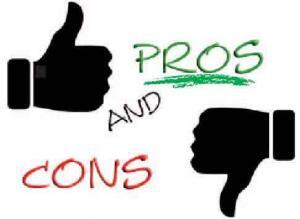Clients have frequently asked us if they should keep their 401(k) plan, or initiate a 401(k) rollover to IRA. So, should you?
More often than not, we find this to be in a client’s best interest. As Investment Adviser professionals, we want everyone to know the details of leaving your retirement savings in your 401(k), moving them to an IRA (also know as a 401(k) Rollover), and the pros and cons of each plan. So, let’s run through the benefits and drawbacks for each.
401(k), Tax Qualified Plan Details
You’ve been fortunate to have access to an employer’s 401(k) plan and you contributed regularly via payroll deduction. You’ve chosen your investments as best as you could, based on the experience and investment options you had with investing. This may have and most likely not, included advising assistance from the plan’s fiduciary. Now, the time has come where you need to make a decision. Do I move the assets of my 401(k) plan to an IRA? Do I leave them? Do I continue to work and keep contributing? Do I contribute to one or both? These are decisions that will have to be made during and after your employment, whether you transition to another employer, or decide to retire altogether. There are some advantages and disadvantages to each plan. So here’s some details of your 401(k) plan and why you may want to keep it, contribute to it or an IRA (or both), or rollover your 401(k) plan into an IRA entirely.
So what are the pros?
- First off, tax-free growth! No taxes are paid on the dividends or capital gains your investments earn.
- Contributions are made via payroll deduction.
- Many employers will match contributions (a percentage) up to a maximum amount.
- Catch-up provisions are higher than that of an IRA.
- You are 100% vested on your own tax-deferred contributions.
- Your contributions reduce your taxable income.
- Your contributions compound over time.
- Your retirement account can be moved to a different employer.
- Your plan can permit loans and hardship withdrawals.
- Assets are roll-able into an IRA if you still work for your employer at age 59 1/2 or older.
- If you retire any time during the calendar year in which you turn 55 or older, you will not be subject to a 10% penalty on any distribution. There are some caveats to this rule, which we can explain in detail if this describes your situation.

What are the cons?
You will be subject to approval from a Third Party Administrator for distributions, loans, and withdrawals. Basically, anything you want to do with your 401(k) plan will require a TPA approval.
- Administrative Costs: Typically, costs associated with your employer plan are high and passed on to the employee. This is due to the ongoing services and oversight that is needed with the plan.
- Loans: Any outstanding loan must be paid back immediately should you separate from your employer, otherwise it will be treated as a distribution and a 10% penalty may apply.
- Offering: Less than desirable offering for investment options. Typically, your choice of investments are poor, meaning, you just don’t have much to choose from.
- Statements: Most of the time, statements are difficult to decipher, especially when your employer is also making contributions.
- Target Funds: It is our belief as well as highly unlikely, that the same fund manager for any target fund will still be managing your investment(s) through the duration of your employment.
- TPA: You will be subject to approval from a Third Party Administrator for distributions, loans, and withdrawals. Basically, anything you want to do with your 401(k) plan will require a TPA approval.
- Waiting Periods: There may be waiting periods should you change employers, where you may have to wait 6 months before you can contribute to a new employer 401(k) plan.
IRA, Tax Qualified Plan Details
There are different animals in the IRA realm, such as a traditional IRA, Roth IRA, and SEP-IRA. Traditional IRAs and Roth IRAs are for individuals wanting to set money aside on a tax-deferred or after-tax basis. As of this writing, Roth IRAs are not taxed when distributions are taken since the money that was put in was already deposited on an after-tax basis. SEP-IRAs on the other hand, are designed for the self-employed (employee) and have higher yearly contribution limits. Those yearly contributions however, cannot exceed the lesser of: 25% of compensation, or $57,000 for 2020 (or $56,000 for 2019, subject to annual cost-of-living adjustments for later years).
So what are the pros?
The choice of investment options are literally the universe, compared to very limited investment options with most 401(k) plans.
- Once again, tax-free growth! No taxes are paid on the dividends or capital gains your investments earn.
- You have more control of your IRA and are not subject to a Third Party Administrator.
- A great alternative if you’ve maxed out your employer’s contribution percentage. You can also mitigate the administrative costs of your 401(k) plan by taking advantage of your employer’s matching contribution up to 100%, then open an IRA when the 100% employer match is no longer available.
- You are also 100% vested on your own tax-deferred contributions.
- Your contributions can also reduce your taxable income.
- Your contributions also compound over time.
- Assets are roll-able into an IRA, regardless if you still work for your employer at age 59 1/2.
- You can take a distribution (even if it’s for a hardship) at any time. You do not need permission from a TPA and you may not be subject to a 10% penalty. This could also be considered a con, since IRA’s were not designed to be checking accounts.
- Administrative fees are considerably less compared to a 401(k) plan.
- Customized beneficiary designations. Many 401(k) plans won’t accept them.
- Statements are typically much easier to read.
- The choice of investment options are literally the universe, compared to very limited investment options with most 401(k) plans.
What are the cons?
- Catch-up provision: Amounts are lower than that of a 401(k).
- Contributions: The yearly maximum contribution is much less than that of a 401(k) plan. However, this does not include rollovers from a 401(k) plan.
- Deductible: If you have access to a 401(k) plan, contributions to an IRA may not be deductible. It will depend on the income earned from you, and your spouse if applicable.
- Loans: No loan provisions. However, the CARES Act waived penalties for early distributions due to COVID-19.
- Penalty: Even if you retire any time during the calendar year in which you turn 55 or older, you will still be subject to a 10% penalty on any distribution until you reach age 59 1/2. With a 401(k) plan, distributions can commence as early as age 55, penalty free. Again, there are certain caveats to this rule.
- Roth IRA: A Roth IRA may not be available depending on your income, and your spouse’s income if applicable.
Things to Remember
Many things must be taken into consideration, which would determine whether to roll your 401(k) plan into an IRA or not. Contributions to each plan must also be considered, whether contributing to one or both qualified plans. Things such as current and future lifestyle, investment objectives, retirement goals and objectives, as well as other issues that must be taken into account when designing and implementing a plan. It is simply impossible to explain each facet, as needs and desires vary among individuals. More about the process of personalized financial planning can be viewed by clicking here, or retirement planning details can be viewed by clicking here. Click here for a great article from Investopedia, discussing “The Top 7 Reasons to Roll Over Your 401(k) to an IRA.” In easy-to-understand terminology, just remember that a 401(k) and Traditional IRA are similar in terms of how they are treated for tax purposes. The main differences between the two are access to your assets, contribution limits (catch-up provisions), and eligibility.
Bottom line is this: Call us today! Our advisers will work one-on-one with you to understand your current financial situation and your financial goals. They will then design and help you implement a financial plan that is customized to your needs and best interest, while remaining focused on your short- and long-term objectives. We will then monitor and remain focused on your financial goals.
—
Posted from Admin at Association Financial Services, LLC




